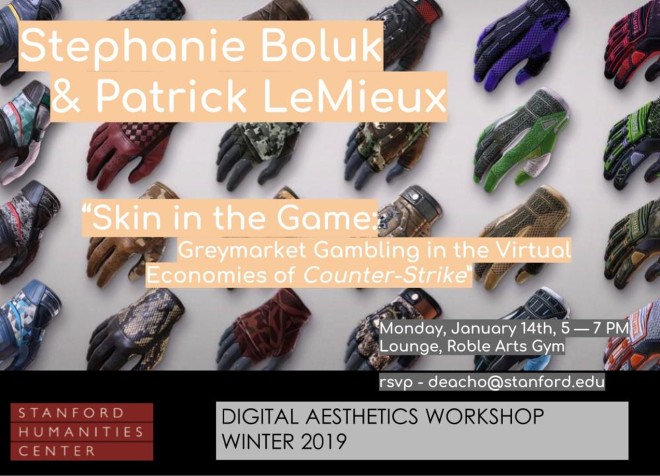
Recently, I announced an upcoming event featuring the Game Changer Lab Chicago, founded by Melissa Gilliam and Patrick Jagoda, as part of the new Critical Making Collaborative at Stanford. I am pleased now to announce another event featuring Patrick Jagoda, the following day, as part of my other new initiative this year at Stanford: the Intermediations series, which is dedicated to exploring the intersections of intermediality and interdisciplinarity.
On January 27, at 12pm in the Terrace Room of Margaret Jacks Hall, Professor Jagoda of the University of Chicago will be presenting on “Metagames and Media Aesthetics.” Please see below for an abstract and bio, and hope to see some of you there!
“Metagames and Media Aesthetics”
Broadly circulating humanistic terms such as “metafiction” (William H. Gass), “metapictures” (WJT Mitchell), and “metacomics” (M. Thomas Inge) point to heightened self-reflexivity within a medium or form. Particularly since the 2010s, we have seen an increased volume of “metagames” or games about games that include prominent independent game examples such as The Stanley Parable (2013),Doki Doki Literature Club! (2017), and There is No Game (2020). This presentation explores different theories and categories of metagames en route to the question of why metagames are so important to understanding our contemporary media ecology in 2023. Video games in general, and metagames in particular, call for an expanded sense of media aesthetics that exceed Roland Barthes’s earlier triumvirate of image, music, and text. This talk theorizes the videogame sensorium and its broader implications for media studies.
Bio:
Patrick Jagoda is the William Rainey Harper Professor of Cinema & Media Studies, English, and Obstetrics and Gynecology at the University of Chicago. He is Executive Editor of Critical Inquiry and director of the Weston Game Lab, as well as co-founder of the Game Changer Chicago Design Lab and Transmedia Story Lab. Patrick’s books include Network Aesthetics (2016), The Game Worlds of Jason Rohrer (2016 with Michael Maizels), Experimental Games: Critique, Play, and Design in the Age of Gamification (2020), and Transmedia Stories: Narrative Methods for Public Health and Social Justice (2022 with Ireashia Bennett and Ashlyn Sparrow). He has also co-edited five special issues or edited volumes, and published over fifty essays and interviews. Patrick designs transmedia, digital and analog games, including the climate change alternate reality game Terrarium (2019), which received the 2020 IndieCade award for the best Location Based and Live Play Design. He is a recipient of a 2020 Guggenheim Fellowship.
